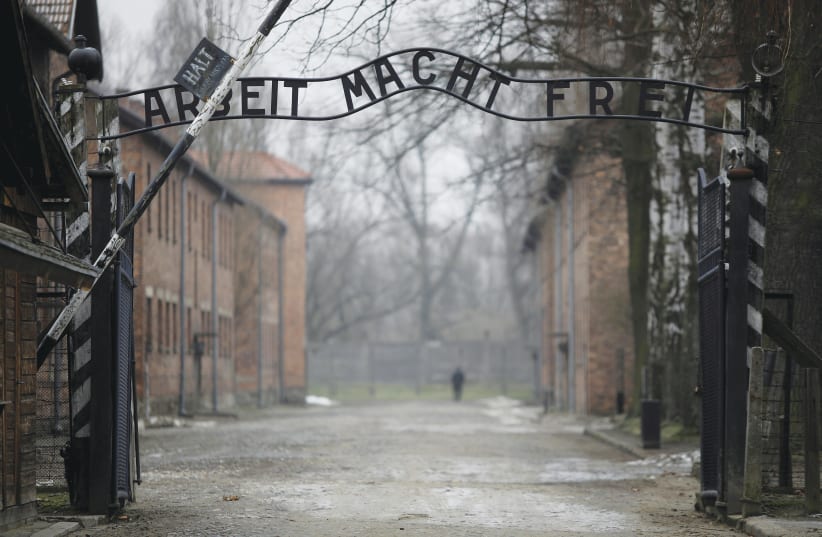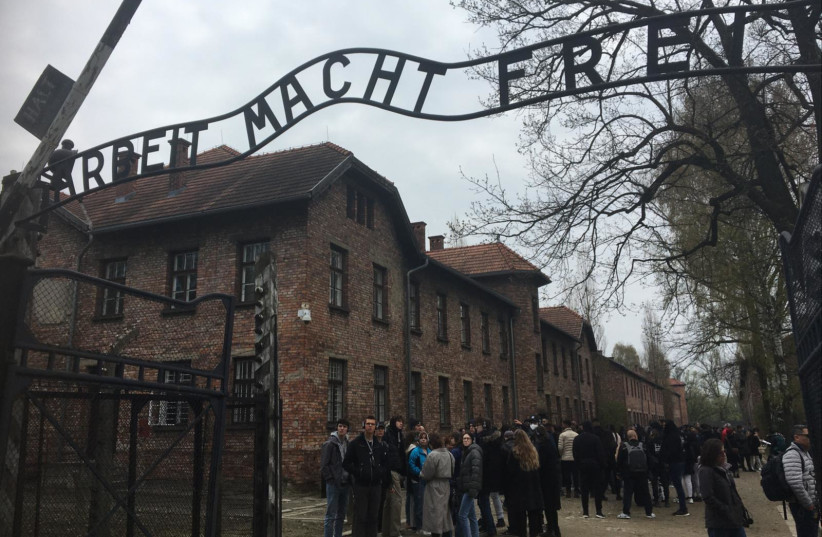Adolf Eichmann was not a banal paper pusher but a fanatic hater of Jews. As the SS officer who coordinated the mass murder of European Jewry in the Nazi death camps in Poland, Eichmann reveled in his role as the engineer of the “Final Solution.” When the Hungarians, allies of Germany in World War II, refused to deport their Jewish citizens on Eichmann’s trains to death, the SS officer came to the country in March 1944 to direct the formation of ghettos and the subsequent deportation of Hungarian Jewry.
In 10 weeks, in the spring and summer of 1944 in Auschwitz-Birkenau, the Germans gassed and cremated 450,000 Hungarian Jews. Despite pleas by the Zionist leadership and the World Jewish Congress to American and British leaders, Allied bombers never destroyed the machinery of death. That might have saved many Hungarian Jews and been a signal to the world that the Allies would not tolerate genocide.
Yet, this tragic series of events is compounded by a myth: The Allies never bombed Auschwitz. Indeed, the Allies bombed Auschwitz as the gas chambers and crematoria worked non-stop in destroying the Jews of Hungary and the 60,000 Jews who were the remnant of Jewry in the Lodz ghetto in Poland. The truth is that American bombers targeted Monowitz, the slave labor camp of Auschwitz, considered a military target because its factories produced synthetic rubber and fuel for the German war effort.
The British and Americans told the protesting Jews that the Auschwitz-Birkenau death camp was not a military target and that German anti-aircraft fire would kill airmen who were on a mission, and would also cause the deaths of many Jews in the extermination camp. Meanwhile, a Birkenau survivor recounted in 1980: “We prayed and hoped to be bombed by them and so to escape the helpless death in the gas chambers.”
In his landmark 1981 study, Auschwitz and the Allies, Sir Martin Gilbert includes photographs taken by Allied aircraft flying over the Auschwitz complex on August 25, 1944. There is an aerial photograph of the death camp of Birkenau (also known as Auschwitz II), which included details of the railroad siding, Crematorium II, Crematorium III, the underground dressing room, and the largely underground gas chambers, of both crematoria.
Most shocking in the photograph is the detail of Jews being led in groups to their extermination. While one cannot make out individuals, it is apparent that the groups are being taken to their death. In September, while American aircraft were successful in bombing the slave labor facilities in Monowitz (also known as Auschwitz III), bombardiers dropped a number of explosives by mistake on the main camp of Auschwitz (Auschwitz I for the internment of Polish prisoners) that landed on a German barracks, killing 15 SS men. Bombs also fell by accident on the death camp of Birkenau and Jews were killed as a result.
How were the Auschwitz photos treated?
THE PHOTOGRAPHS of Auschwitz I and Birkenau were ignored by military intelligence analysts during the war. Only the photos that were considered of military value – the Monowitz factories in the third camp of the complex – were studied carefully. The photos of the crematoria of Auschwitz-Birkenau were only studied by expert photo analysts, decades after the war’s end, and included in master historian Gilbert’s book.
On September 7, while the exterminations at Birkenau were beginning to come to a halt, a representative of the British Foreign Office writes that “in my opinion, a disproportionate amount of time of the Office is wasted on dealing with these wailing Jews.” But for Jews who were in the slave labor camp of Monowitz, the bombings were a blessing.
One survivor writes: “How beautiful it was to see squadron after squadron burst from the sky, drop bombs, destroy the buildings, and kill also members of the Herrenvolk.” It is tragic that Allied bombers did not obliterate the crematoria of Birkenau. That task was left to the Jews themselves. They were alone and abandoned.
The Jews of the Sonderkommando in Birkenau, who had the horrifying task of collecting the gassed corpses of Jews and cremating them, smuggled in explosives from the Jewish women working in the nearby Union explosives factory.
On October 7, 1944, fearing they were about to be executed for what they had witnessed, the Jews rebelled with axes, picks and crowbars, killing three SS corporals and throwing a kapo in the furnace. They set Crematorium IV on fire and disposed of the explosives lest they be discovered.
Some of the Jews escaped but almost all were recaptured and executed. The women who smuggled in the explosives were tortured but revealed nothing. The SS hanged them. That was the only time a crematorium was destroyed in Auschwitz-Birkenau. What the British and Americans refused to do, the Jews attempted to accomplish by themselves.
It is of minor comfort that bombs dropped in error by the Allies destroyed SS men in their barracks. It is also important that the Americans targeted the slave labor camp of Auschwitz-Monowitz and both destroyed what was important for the Nazi war effort and also gave hope to the Jews slaving away in the worst of conditions.
But the fact that the photos of the crematoria in Birkenau were ignored during the war and that the Allies refused to give aid to the “wailing Jews” – this is a stain on what otherwise was a victory that saved a remnant of European Jewry.
The writer is a rabbi, essayist and lecturer living in West Palm Beach, Florida.

